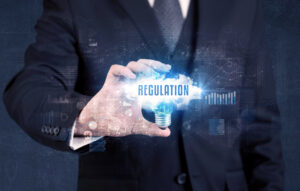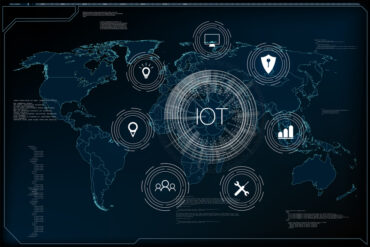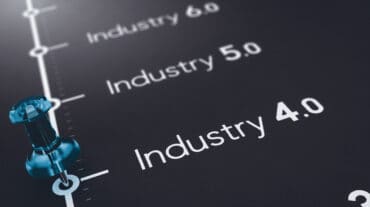
By adopting an integrated approach that addresses every stage of the production process, manufacturers can comply with regulations and lead the charge toward a more sustainable future.
The electric vehicle (EV) industry is at a pivotal moment, with both sustainability and regulatory pressures reshaping the landscape as governments across the globe implement stringent mandates to phase out internal combustion engine (ICE) vehicles. Manufacturers will have to navigate the dual challenge of complying with these regulations while ensuring that their production processes are environmentally sustainable. This article explores the intersection of these regulatory developments and the need for sustainable practices in EV manufacturing.
Regulatory Push (and Pushback) Towards Electrification
The electric vehicle (EV) industry is undergoing transformative changes, driven by a series of ambitious regulations that aim to curb carbon emissions and accelerate the shift from ICE vehicles. These regulations are crucial in shaping the future of EV manufacturing and sales, presenting opportunities and challenges for the industry.
The Biden Administration’s Historic Climate Regulation
One of the most significant regulatory developments in recent history is the Biden administration’s new tailpipe pollution limits, which are set to drastically reshape the American automobile market. The Environmental Protection Agency (EPA) has introduced rules requiring the majority of new passenger cars and light trucks sold in the United States to be all-electric or hybrids by 2032. This regulation is a cornerstone of President Biden’s strategy to confront climate change, targeting a reduction in national carbon emissions by half by 2030.
Despite these ambitious goals, the transition to electric vehicles is politically charged. The regulation has been criticized by opponents who argue that it overreaches and could disrupt industries reliant on traditional automotive manufacturing. Additionally, the rule is expected to face legal challenges, particularly from fossil fuel companies and Republican-led states. However, the Biden administration is pushing forward, emphasizing the long-term environmental and economic benefits of these standards, which include significant reductions in greenhouse gas emissions and cost savings for consumers over the life of their vehicles.
See also: EV Makers Need Modern Design and Manufacturing Practices
The Impact of New EPA Tailpipe Pollution Rules
The new EPA tailpipe pollution rules are designed to incrementally limit vehicle emissions. Car manufacturers will have to sell a greater percentage of zero-emission vehicles (ZEVs) each year. By 2032, over 56% of new cars sold in the U.S. are expected to be electric vehicles, with an additional 16% being hybrids. This shift is intended to reduce carbon dioxide emissions by over seven billion tons in the next three decades—equivalent to removing a year’s worth of all greenhouse gasses produced by the United States.
However, implementing these standards will require substantial changes across the automotive ecosystem. Manufacturers will need to invest heavily in new technologies, infrastructure, and supply chains to meet the targets. Furthermore, while these regulations promise long-term environmental benefits, they also highlight the need for robust consumer adoption of electric vehicles, which remains a critical challenge given current market uncertainties and infrastructure limitations.
Pushback from the Trucking Industry on EV Regulations
Not everyone is pushing for EV, however. The trucking industry’s pushback against New Jersey’s upcoming EV regulations, particularly the Advanced Clean Truck (ACT) mandates, highlights the potential challenges that could ripple through the broader EV ecosystem. Industry concerns focus on the high costs and logistical hurdles associated with adopting electric Class 8 trucks, which are significantly more expensive and less efficient in payload than diesel models. This resistance could slow the adoption of electric heavy-duty vehicles, a crucial segment for reducing overall transportation emissions. Additionally, the lack of adequate charging infrastructure for these vehicles and the high development costs could create bottlenecks in the transition process .
For the EV industry, these challenges underscore the importance of addressing infrastructure gaps and ensuring regulatory policies align with practical capabilities. If key segments like trucking face significant hurdles, it could delay achieving broader electrification goals, impact supply chains, and create resistance from other industries facing similar transitions. This situation also highlights the need for collaboration between regulators, industry stakeholders, and technology providers so that transitioning to electric vehicles is economically viable and logistically feasible, paving the way for more widespread adoption across all vehicle categories .
Market Uncertainty Impacting EV Sales in the US and Europe
The latest EY Mobility Lens Forecaster analysis indicates that while China continues to see robust growth in electric vehicle (EV) sales, the US and Europe are experiencing a slowdown. In the US, factors such as high interest rates, limited charging infrastructure, and economic uncertainties are contributing to a plateau in EV demand. Similarly, Europe is facing challenges like reduced incentives, a lack of affordable EV models, and concerns about the adequacy of charging stations. These issues have led to a short-term slowdown in EV adoption despite long-term forecasts predicting that battery electric vehicles (BEVs) will still make up 50% of sales by 2030 in Europe and 2033 in the US.
This market uncertainty poses significant challenges for the EV industry, particularly as it strives to meet ambitious regulatory targets. The plateau in sales highlights the critical need for more robust infrastructure development and consumer confidence-building measures. As governments and manufacturers work to address these issues, the EV market in the US and Europe will need to navigate these short-term headwinds to achieve sustainable growth in the coming years.
A Roadmap and Opportunity for EV Manufacturers
As climate change regulations reshape the automotive industry, traditional dealerships face significant challenges, particularly with compliance costs and environmental liabilities. This evolving challenge is an excellent opportunity for EV manufacturers to lead the charge. Many auto dealers are already pivoting towards electric vehicles, recognizing the benefits of aligning with sustainability goals. For EV manufacturers, supporting these dealerships through proactive strategies—like training, infrastructure development, and financial incentives—can strengthen their market position and set the stage for future growth.
Moreover, the challenges faced by traditional dealerships, such as liabilities related to past pollution, offer a roadmap for EV manufacturers. As the industry moves towards stricter environmental standards, EV manufacturers can anticipate and address future challenges by incorporating sustainability into every aspect of their operations. By learning from the past and leading with innovation, EV makers can help their partners navigate these regulatory shifts while seizing opportunities to expand their market share in a rapidly evolving green economy. This proactive approach helps secure compliance and puts EV manufacturers in leadership in the next era of automotive excellence.
Challenges and Industry Responses
As the automotive industry faces an increasingly stringent regulatory environment, the challenges posed by these regulations extend beyond immediate compliance. For EV manufacturers, one of the key concerns is making the transition to electric vehicles not just regulatory-driven but also market-sustained. The stall in EV sales in the U.S. and Europe highlights the delicate balance between pushing for rapid adoption and maintaining consumer confidence. Manufacturers must address the root causes of consumer hesitation, such as affordability, range anxiety, and the adequacy of charging infrastructure, to prevent long-term stagnation in the market.
Another significant challenge is the potential for uneven progress across different industry segments. For example, while passenger EVs might benefit from broader public acceptance and regulatory incentives, heavy-duty vehicles like trucks face more substantial barriers due to higher costs and infrastructure demands. This discrepancy could lead to a fragmented industry response, where some sectors advance rapidly while others lag behind. EV manufacturers must collaborate closely with regulators, infrastructure providers, and other stakeholders to ensure a cohesive and inclusive approach to electrification.
Finally, the evolving regulatory landscape offers EV manufacturers a unique opportunity to redefine their role in the market. By proactively addressing these challenges, they can position themselves not just as compliant players but as industry leaders who set the standard for sustainability and innovation. This proactive stance will be crucial in navigating future challenges, such as potential liabilities related to environmental impact or new regulations. This way, the current challenges can be transformed into a strategic advantage, enabling long-term growth and leadership in the global automotive market.
The Imperative of Sustainable Manufacturing:
Amid these regulatory and market pressures, the focus on sustainability in EV manufacturing becomes more critical. Reducing energy consumption, optimizing material use, and minimizing production line waste are essential for meeting regulatory and environmental objectives.
- Energy Efficiency: As EV production scales up, manufacturers must adopt energy-efficient technologies and integrate renewable energy sources to reduce their operational carbon footprint.
- Material Optimization: Sourcing sustainable materials and minimizing waste through advanced manufacturing techniques are crucial. These practices support regulatory compliance while contributing to the EV industry’s overall sustainability.
- Waste Reduction: Implementing lean manufacturing principles and recycling production waste can help manufacturers reduce their environmental impact, aligning with both regulatory requirements and broader sustainability goals.
Preparing for the Future
The convergence of regulatory mandates and the need for sustainable manufacturing practices presents challenges and opportunities for the EV industry. By adopting an integrated approach that addresses every stage of the production process, manufacturers can comply with regulations and lead the charge toward a more sustainable future.







